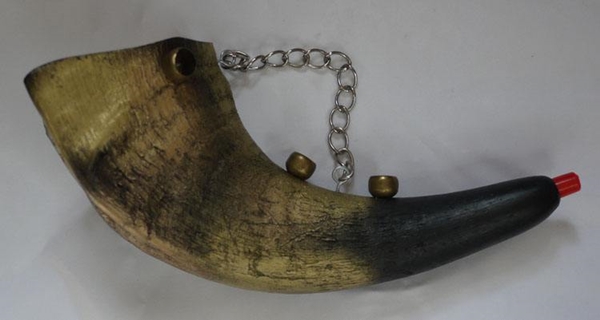The playing of the horns and the music
The ox horns are the lip-vibrating instruments of the Han, Yao, Yi, Miao, Jingpo, Naxi, Nu, Dai, Buyi, Tujia, Gelao, Li and other ethnic groups. Popular in Gui, Guizhou, Yunnan, Sichuan, Hunan, Guangdong, Hainan and other provinces.

When playing the horns, those with smaller horns should hold the horns with both hands and play; those with larger horns should hold the bottom of the horns with the left hand and place them in front of the chest, and the ones with the right horns should play. The horn has no sound hole and no fixed pitch. Depending on the mouth shape change and breath control, different pitches can be played. The small ones have a high-pitched and sharp tone; the large ones have a thick and melodious tone, which can be used for solo or ensemble performances, with gongs and drums accompaniment when playing.
In some areas of Hunan, there are also popular horn tunes such as "Jade Emperor Fu", "Lao Junfu", "Goat Crossing Au".
 渝公网安备 50010702504639号
渝公网安备 50010702504639号